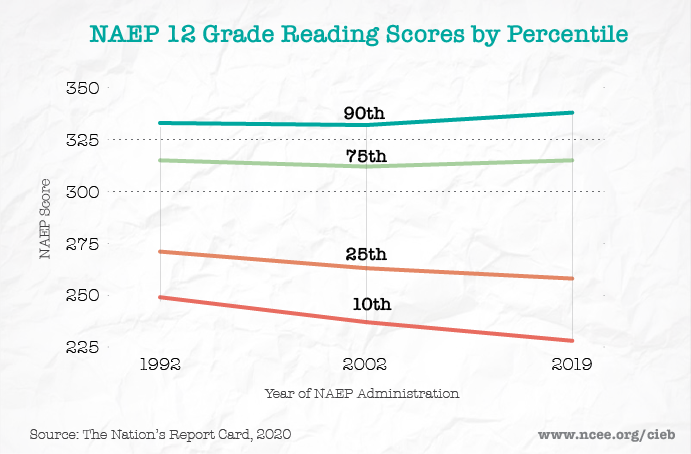
The recently released National Assessment of Educational Progress (NAEP) Grade 12 results found that the achievement gap between high- and low-performing students has widened significantly in both math and reading in the United States. As shown in the above chart, the gap in reading performance between the 90th percentile and the 10th percentile of U.S. 12th graders is at its largest since NAEP began testing 12th graders in 1992. While disappointing, this data is not surprising. The most recent Programme for International Student Assessment (PISA) data show a similar increase in the gap between the top and bottom 10 percent of student performance for 15-year-old U.S. students in reading and math. Both the NAEP and PISA data were collected before the coronavirus pandemic; the nationwide school closures that resulted from the pandemic are expected to only widen the achievement gap.
While the gap in the U.S. has been increasing, other countries’s education systems have been getting better and more equitable results. To see how they do this, see NCEE’s The Design of High- Performing Education Systems which distills what we have learned from more than 30 years of research about high performing systems around the world.




